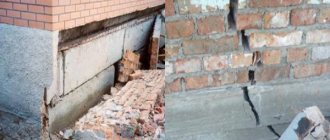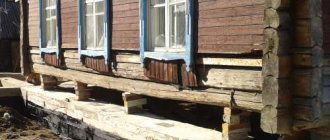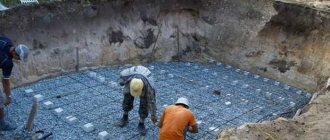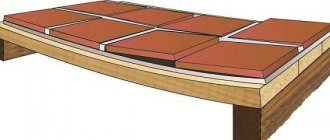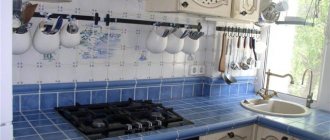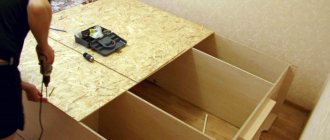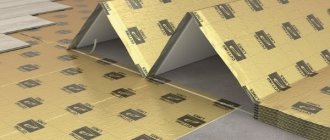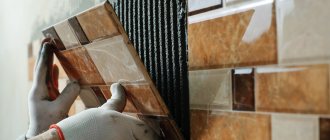Strengthening the foundation of a private house may be required in different cases, but most often one of the existing methods is resorted to after long-term use of the building. Any building that has served for decades needs repairs. And it is the foundation that requires special attention, since it not only bears the main load from the entire structure, but is also negatively affected by external natural factors, such as moisture, aggressive chemicals in the soil, temperature changes, wind, soil heaving, and more. All this together leads to wear and tear of the materials from which the foundation of the house is built.
Strengthening the foundation of a private house
In this regard, if repair work is not carried out on time to strengthen and strengthen the strength of the foundation, then there is a risk of its deformation. And as a natural consequence - the beginning of the destruction of the load-bearing walls of the structure of the entire house. In some cases, the strengthening process can be done on your own. But very often, in order to bring the foundation into proper condition, it is necessary to use heavy special equipment.
When the need for reinforcement arises
Subsidence or initially weak soil is strengthened under an already constructed building or before the start of construction on a site with poor engineering and geological conditions. As a rule, strengthening the soil under an existing structure is combined with repairing and strengthening the foundation.
The need to strengthen the foundation under the foundation of an existing building arises for the following reasons:
- design miscalculations due to the lack of or unreliable information about the geology of the site, poor quality construction work;
- increased load on the foundation during reconstruction, addition of additional floors, installation of new equipment;
- displacement of layers during construction and installation work nearby;
- erosion of the foundation due to rising groundwater levels, disturbances in the drainage of melt and rainwater, and failures of water supply and sewerage systems;
- swelling of the soil due to an increase in the depth of freezing in winter under the influence of climate changes.
The choice of a specific technology when strengthening the foundation under a constructed structure is linked to the corresponding objective restrictions. During new construction, the method of strengthening soils is chosen based on the results of a feasibility study.
Recent technologies make it possible to use in construction, after additional preparation, sites with the most difficult engineering and geological conditions.
Preparatory work
Experienced builders advise, before starting to repair a pile foundation, to determine exactly what happened to the piles - whether they are failing or protruding. To establish this fact, it is best to call a team of specialists who will install a control pile near the building to conduct an inspection. This is necessary to find out the installation depth of this element and determine whether the freezing point has been passed or not.
If the pile bulges, it is not immersed in the soil to the required level. If the piles fail, it will be much more difficult to strengthen them, but it’s still possible: the failure can be stopped by installing metal, wood, or reinforced concrete spacers under the foundation. Installing cement posts will not give the desired effect and may even worsen the situation in some cases.
Measures to prevent soil erosion
Strengthening the foundation is inextricably linked with work to protect against erosion and remove excess moisture.
Ways to protect against erosion:
- installation of a blind area - concreting or asphalting along the perimeter of a building with a slope to drain melt and rainwater from the foundation;
- drainage - the formation of a network of pipes, trays and other drainage paths around the building, the installation of a storm system if necessary;
- pumping - discharging water into storage pits, wells or pits with subsequent pumping into drainage ditches;
- vacuum installation with ejector wellpoints - lowering the groundwater level by pumping it under vacuum through a wellpoint installed in the ground;
- electroosmotic dehumidification - compaction of wet silty soils through which a direct electric current is passed; when electroosmotic dehumidification is combined with vacuum dewatering, efficiency increases.
Taking measures to prevent erosion of the foundation, in addition to the stability of the building, has a positive effect on the waterproofing of building structures.
General approaches to solving the problem
In almost all of the cases discussed above, it is not possible to eliminate the source of destruction of the foundation. The situation can be partially corrected only by reducing the soil moisture immediately before strengthening the foundation with your own hands.
A competent approach to eliminating this cause involves taking a whole set of measures, consisting of changing the temperature regime of the soil in the area where the foundation is located, as well as improving the quality of its waterproofing protection.
Analysis of the reasons for the destruction of the load-bearing foundation, leading to the need for its restoration and subsequent strengthening, allows us to draw the following conclusions:
- before starting restoration work, it is necessary to take care of additional thermal insulation of the soil layers on which the foundation rests;
- such insulation will eliminate the cause of heaving in the soil, and also creates conditions for reducing humidity in the laying area;
- As an additional measure for waterproofing protection of the base, the installation of a special drainage system along the foundation can be considered.
In case of emergency, it will be possible to resort to replacing part of the unstable (heaving) soil with a pre-prepared mixture of crushed stone and sand.
And only after completing the entire complex of heat-protective and waterproofing measures will it be possible to move on to directly strengthening the foundation with your own hands.
When choosing a method for preparing the foundation for its subsequent strengthening, you should proceed from the material used to make the walls of the building. Since a country house can be made of wood, bricks or concrete blocks, we will try to consider the features of each of these approaches.
Injection of the base
Strengthening the soil under the foundation by injection involves drilling wells and pumping a strengthening repair composition through injection devices. Under a strip or columnar foundation, wells are drilled obliquely from the surface of the earth; a slab foundation is drilled through from above.
The repair composition under pressure penetrates into all voids adjacent to the well. Constant monitoring of the process is necessary to ensure that the injected material does not go deep. The choice of a specific injection technology is influenced by the type of soil, on which the type of composition depends.
Methods of soil injection:
- Silication . Liquid glass is used for injection. The method is used to consolidate sandy or loess soils and quicksand.
- Smolization . Synthetic fast-curing resins are pumped into wells. The technology is used to strengthen water-saturated or dry sands, loess, sandy loam, and loam.
- Cementation . Wells are filled with a cement-based mortar mixture mixed with clay, loam or sand. Hot bitumen is additionally pumped into large voids. The consistency of the solution is selected taking into account the density of the soil or the size of cracks in the rock. The technology is difficult to implement in fine-grained sands and is completely unsuitable for sandy loam, loam, clayey or silty soils.
- Ammoniation . The method is intended to protect against subsidence of loess soils. Ammonia gas is injected into the soil beneath the foundation, which reacts chemically with the rock.
The injection process occurs without the use of large-sized equipment and does not require partial disassembly or suspension of operation of the building. An additional advantage of injection technology is the ability to lift and return the settled foundation to its original position. In addition to strengthening the foundation, an impervious curtain is created under the foundation for rising groundwater.
Step-by-step process of strengthening the grillage
In case of grillage corrosion, the gunite method is used. It consists of layer-by-layer application of a cement solution to the surface using reinforcing mesh and wire. Work algorithm:
- Clean the surface from dirt with a steel brush or sandblasting compressor.
- On the grillage, drill holes 20 cm deep in 60 cm increments in a checkerboard pattern. Place reinforcement with a diameter of 1 cm into the holes and tie a reinforcing mesh with wire.
- Pour concrete into large cracks.
- For maximum reliability, it is better to pour the solution into pre-drilled holes with a diameter of 5 mm in a checkerboard pattern at a distance of 1 m from each other.
- In case of extensive damage, in addition to concreting, tie it with a reinforced concrete belt.
Such measures will help protect the concrete structure from destruction even if there are many cracks. It is worth carrying out the work in the spring so that the screed completely hardens and strengthens over the summer.
Jet grouting of the base
Jet grouting technology, or jet grouting, consists of eroding soil while simultaneously filling the resulting cavity with a solution pure or mixed with the soil mass. This method of strengthening the soil under the foundation can be considered in two ways - as strengthening the soil base with the installation of an impervious curtain and as the formation of a new pile foundation under the old one.
Unlike injection, jet grouting is suitable for almost all types of soil, the result of strengthening is determined with high accuracy. The structure and composition of the soil, as well as the percentage of cement, affect the strength of hardened soil concrete.
Jet cementation is carried out in two stages - first, washout is carried out and a well is formed, and during the reverse stroke of the drill string, a solution is supplied. The diameter of a column made of hardened mortar depends on the type of soil, the force of the applied pressure, the duration of erosion, and the technology used.
Technology options:
- One-component . For erosion, only cement mortar is used, the diameter of the columns is the smallest.
- Two-component . Additionally, compressed air is supplied, the diameter of the columns is approximately twice as large as in the previous case.
- Three-component . Erosion is carried out with a water-air jet, and cement mortar without impurities is pumped into the resulting cavity. The diameter of the columns is the largest, but the strengthening technology is the most complex and requires large-sized equipment.
Many foreign companies have now begun to use high-power compressors for jet cementation. The use of such equipment made it possible to increase the diameter of the columns to 5 meters.
How to strengthen a strip foundation
If there is damage to the strip foundation, it is necessary to additionally add reinforcement. For this:
1. It is necessary to dig up the foundation from both sides - from the underground to the base and from the street.
2. The concrete is cleaned, all cracks must be widened. The foundation is drilled through.
Important: if there are parts on the old foundation that protrude, then they must be cut off as far as possible.
3. Reinforcement bars are inserted into the prepared holes in the foundation, the outer part of which should protrude.
4. Weld the reinforcement cage to the protruding reinforcement.
5. Next, the formwork is made, which needs to be filled with concrete.
The grip area directly depends on the state of the zero level of the foundation. Typically, the grip should be at least one meter along the entire length of the foundation.
If the foundation is in satisfactory condition, but there is a desire to strengthen it “just in case,” then for this it is necessary to dig a trench in parts along the entire perimeter of the foundation and immediately this part must be concreted. To strengthen the corner of the building, you can use inclined supports. A gap is specially left between the foundations, into which glassine is placed, which allows you to protect the old foundation from settling of the new one.
Thermal method
This method is used mainly for strengthening subsidence soils. The technology for strengthening soil by thermochemical firing is based on treating the base with combustion products of liquid or gaseous fuel. If necessary, the burned material is enriched with additives.
The fuel burns in a sealed well located vertically, horizontally or at an angle. As a result, strong thermal soil pillars are formed.
More modern electrothermal firing is carried out using nichrome electric heaters. The ability to fluctuate the heater power along the well height allows you to adjust the shape and size of the columns formed during firing in accordance with the heterogeneity of the layers.
Application of profiled pipes
To strengthen the pile foundation, profiled pipes measuring 3x6 cm are used. The work is carried out using the following technology: using pipes of the required size, piles are connected in series under the entire building. This option is applicable when the supports rise above the surface by at least 0.7-0.8 m.
The pipes must be welded from the inside of the supports - in the future they will not interfere with finishing work or installation of protective panels. If the piles protrude more than 0.7 m above the ground, the pipes are welded crosswise. The middle of the joint is secured using a special metal plate. This is the name of a square plate measuring 20x20 cm.
Deep compaction
The soil base is compacted mechanically, using sand or soil-lime piles. When lime is slaked due to contact with water, it increases in volume many times over and presses on the walls of the well, greatly compacting the soil. Other compaction options are the installation of rigid elements or vibratory ramming.
Deep compaction of foundations under already constructed buildings is carried out through inclined wells. Previously, such wells were drilled with drilling equipment, followed by the removal of crushed mass or punched with cores. The imperfection of drilling consists in insufficient compaction, and when punching, a strong dynamic effect occurs and there are difficulties in removing the core from the well.
Now, due to these shortcomings, they are trying to use more advanced technologies for strengthening soils by deep compaction - screw punching or the already mentioned jet cementation.
Replacing piles
Sometimes the supports under a home are so damaged that they need to be replaced. How to dismantle a pile foundation, if, for example, it is necessary to remove piles under wooden houses and replace them with new ones, then there is no need to dismantle the buildings. So, if shrinkage has occurred and the pillars have completely failed, to strengthen the foundation of a wooden house, you can increase the head of each support. The ends of the support are called the end of the support, which is located on top, directly under the house. You can build up the supports by exposing the reinforcement. Elements of the required height are welded to it, the sheathing is installed and poured with concrete. Repairing the heads using this method after inspection can be done independently, as it is not difficult. If the pillars are squeezed out, the heads are removed, for which the excess part is carefully destroyed to the required height, and then the reinforcement is cut off.
If this happens in a strip foundation, you will have to take radical measures - the foundation will need to be replaced. This must be done by conducting a preliminary examination.
Our services
carries out injection with a preliminary examination of the object. Travel of an expert outside the Moscow region is paid. After the conclusion of the contract, the amount paid for the examination must be returned to the customer.
List of injection works:
- repair of dry, wet or heavily flowing cracks, cold joints of concrete structures;
- strengthening brick or stone masonry with microcements;
- cut-off waterproofing device to create anti-capillary protection;
- sealing expansion joints and openings for laying communications;
- soil strengthening, creation of impervious curtains under the foundation.
Strengthening the pile foundation from screw piles in existing buildings
House on stilts
To prevent the destruction of a building built on screw piles, it is allowed to strengthen the foundation of the building in use. To carry out the work, it is necessary to disassemble the outer cladding of the base. The structure is raised above the foundation on jacks, after which a reinforcement belt is made from pipes or channels, depending on the thickness of the walls of the house, the number of floors and the mass of the building as a whole.
Upon completion of the welding work, it is necessary to treat the metal parts with anti-corrosion compounds and place the building on a reinforced base. Strengthening the foundations is a guarantee of long-term operation of the structure without premature destruction.
You can't always push
The principle of installing pressed piles differs from the two described above. It is carried out under shock load using special construction equipment. In this case, ready-made reinforced concrete pillars are used.
Reinforcement by pressing method
Strengthening the foundation in this way is not recommended in the immediate vicinity of buildings in disrepair. It is also not advisable to carry out installation in this way near partially destroyed sagging foundations, especially on weak sandy soils.
Information about the processing of personal data
8.1. The Operator processes personal data on a legal and fair basis to fulfill the functions, powers and duties assigned by law, to exercise the rights and legitimate interests of the Operator, the Operator’s employees and third parties.
8.2. The operator receives personal data directly from the subjects of personal data.
8.3. The operator processes personal data in automated and non-automated ways, with and without the use of computer technology.
8.4. Actions for processing personal data include collection, recording, systematization, accumulation, storage, clarification (updating, changing), extraction, use, transfer (distribution, provision, access), depersonalization, blocking, deletion and destruction.
Technology content
The injection method consists of pumping a strengthening or waterproofing composition into the body of a building structure or the adjacent layer of soil. The targeted or damaged area is targeted. Injection work is carried out on reinforced concrete, stone and brick structures, as well as to strengthen soils.
- there is no need for major repairs;
- work is carried out all year round, injection activities do not take much time;
- repair of hard-to-reach areas is facilitated, no excavation work is required;
- in some cases they do not even interrupt the operation of the structure.
The injecting composition is supplied by gravity or injected into the thickness of the layer by a pump through devices in the form of a rod - packers. The back pressure valve prevents the train from exiting backwards. Packers are installed in narrow holes drilled at an angle to the base - boreholes.
The superfluid repair compound easily penetrates into the smallest pores and cracks. High adhesion strength guarantees the solidity of the treated area. After injection, the packers are dismantled and the holes are sealed.
